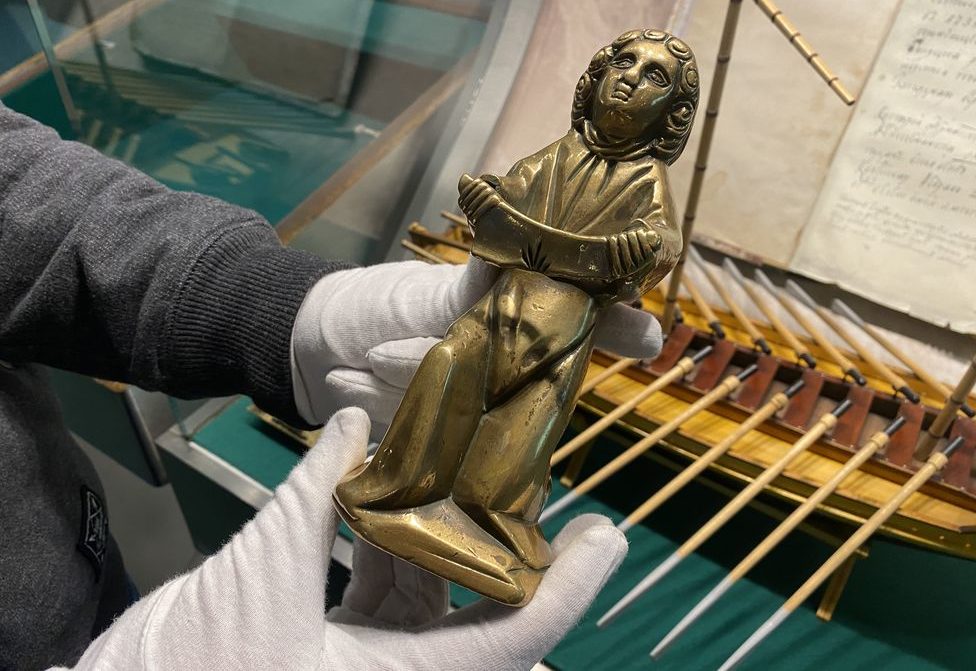This question was asked by a famous ethnographer Galina Gracheva to the museum specialists almost 30 years ago. An expert from the cradle of the St. Petersburg Academy of Sciences – the Museum of Anthropology and Ethnography, the former Kunstkamera, – answered her own question herself, calling the figurine a thing that is certainly rare and interesting. In her expert opinion, Galina Gracheva advised her colleagues from “such far from the center place” not to miss the metal figure made in the last quarter of the 15th century by a dutch craftsman.

According to the definition of the Museum of Anthropology and Ethnography staff, interested in Western European Middle Ages, such figure could be the base of a candlestick with a cup and possible angel wings removable for being cleaned.
It turned out that gift jars were decorated with similar figures, and the angel served as a top, which did not exclude the possibility of having a candle cup on his head. Such figures could hold, for example, a scroll of paper with a request or prayer addressed to God in their hands.
The museum value of an item is often determined not only by its uniqueness, but also by the validity of information about it.
Hunters discovered the yellow metal figurine in cult sledges in the tundra in 1971. Its last owner, Igor Belyaninov, after a consultation in the Norilsk Museum, brought it to Galina Gracheva in Leningrad (the previous name of Saint Petersburg).
Galina Gracheva, a candidate of historical sciences, was known as a major specialist in ethnography of the peoples of Taimyr and Siberia, who participated in dozens of expeditions to the Arctic zone. Gracheva spent a lot of time helping peripheral museums, taking particular care of the Taimyr Museum of Local Lore in Dudinka, and visited the Norilsk Museum several times. During one of the visits, she presented the library with one of her monographs The Traditional Worldview of Taimyr Hunters.
The expert said in her official report that in 1971 hunters discovered the cult sled of the Enets or Nenets: “It is possible that it was covered with a bear skin. But usually it is the skin of a winter reindeer. The contents of the sled also speak of their cult mission. Objects found in such sledges, revered as deities or as intermediaries between spirits and man, came to the natives in different ways. Sometimes they could have been made thousands of kilometers from the place where they were found”.
A letter from Galina Gracheva was dated by February 1, 1991, and in May 1993 the helicopter with an ethnographic expedition organized by a swiss company crashed in Chukotka. Galina was among the dead passengers.
The Norilsk Museum acquired the figurine of a kneeling angel, which is part of a candlestick, only in February 1994. Unlike the museums in London and Amsterdam, where such rarities are kept, at the 1995 The Parable of Norilsk exhibition the angel was exhibited in accordance with its last role – as an idol.
Read about other unique artefacts of the local museums in the Artefacts section.
Text: Valentina Vachaeva, Photo: Taimyr Museum of Local Lore



